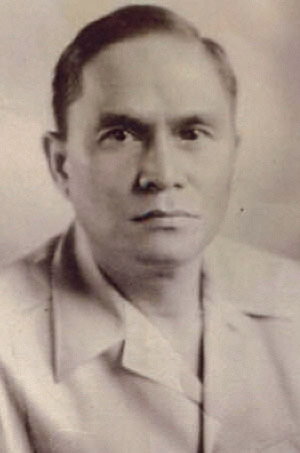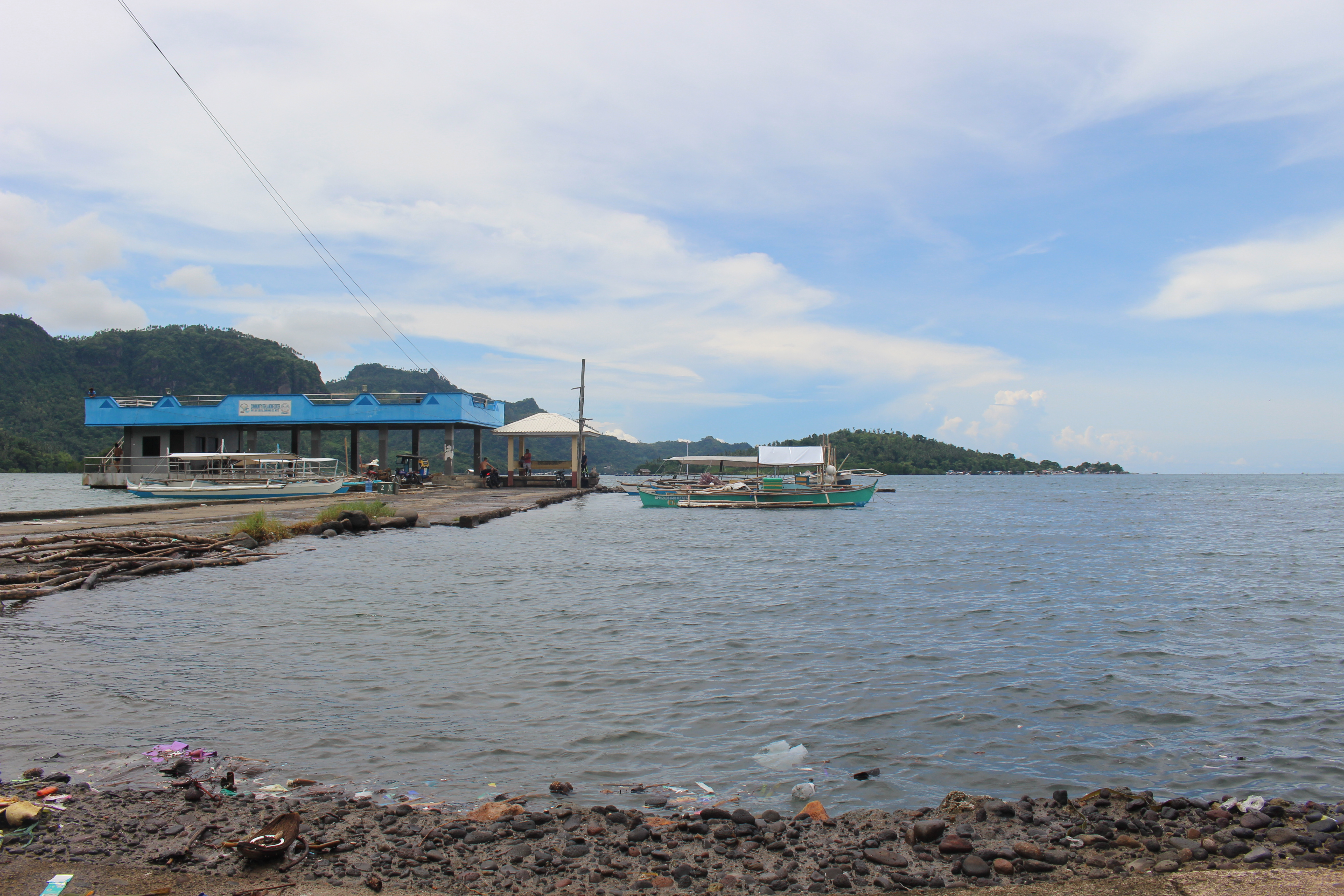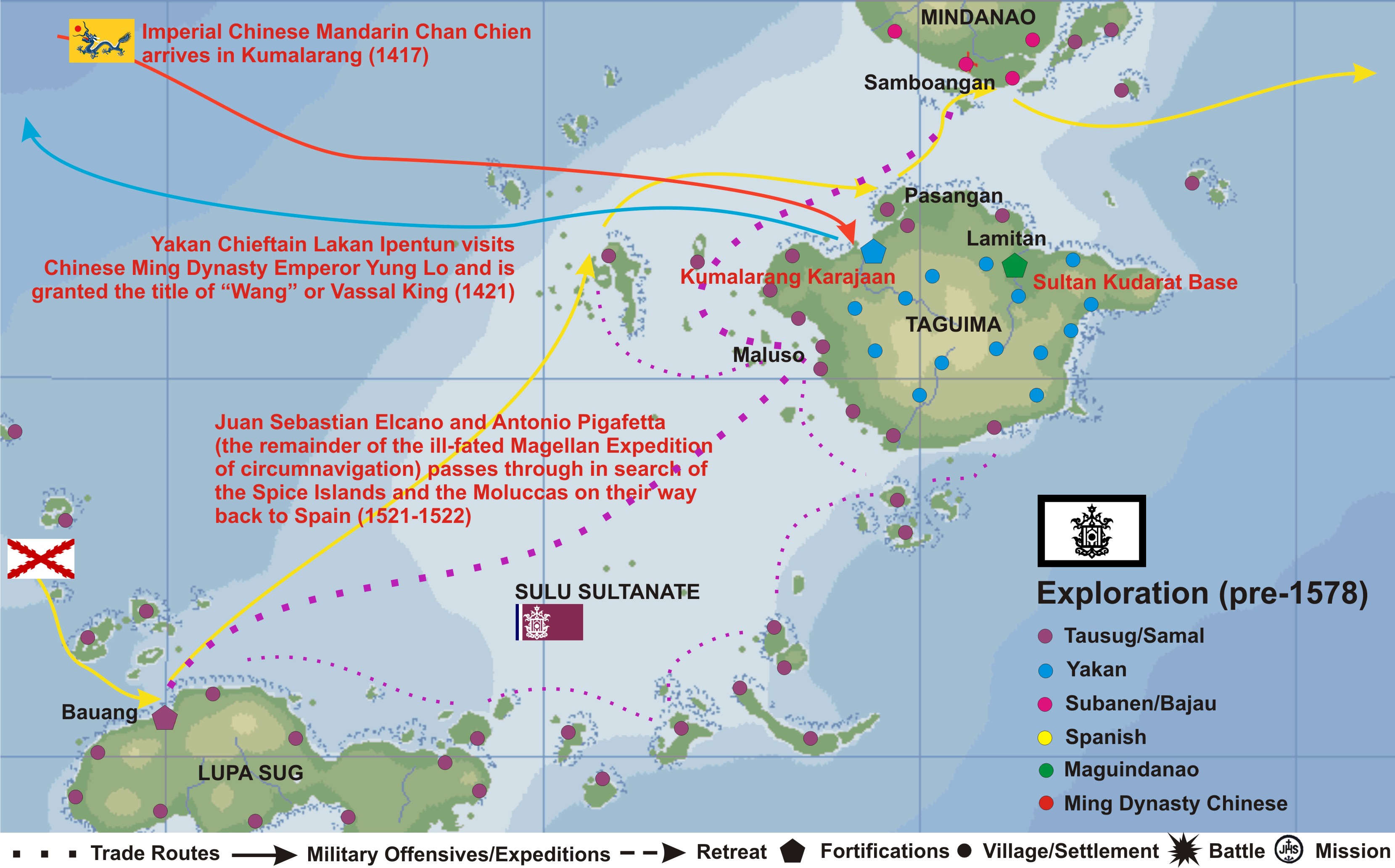|
Zamboanga (province)
Zamboanga (also Zamboaŋga) was a province of the Philippines located in the western region of the southern island of Mindanao, Philippines. History Creation During the time of the United States' purchase of the Philippines (1898), the Republic of Zamboanga had its own independence and jurisdiction on what is now Zamboanga City. After the dissolution of the republic, Zamboanga was eventually consolidated into one major administrative area by the American government of the Philippines, consisting of an enormous region that was the Mindanao island's western peninsula, Basilan Island, and the entire Sulu archipelago, with the ancient namesake town/fort of Zamboanga as the seat of its government, and was called the Moro Province of the Philippines. The Moro Province, in 1914 was replaced by the Department of Mindanao and Sulu. It was divided into Zamboanga, Sulu, Cotabato, Davao, Agusan and Surigao. The town of Zamboanga as its capital. Luis Lim was appointed as the first govern ... [...More Info...] [...Related Items...] OR: [Wikipedia] [Google] [Baidu] |
Philippines
The Philippines (; fil, Pilipinas, links=no), officially the Republic of the Philippines ( fil, Republika ng Pilipinas, links=no), * bik, Republika kan Filipinas * ceb, Republika sa Pilipinas * cbk, República de Filipinas * hil, Republika sang Filipinas * ibg, Republika nat Filipinas * ilo, Republika ti Filipinas * ivv, Republika nu Filipinas * pam, Republika ning Filipinas * krj, Republika kang Pilipinas * mdh, Republika nu Pilipinas * mrw, Republika a Pilipinas * pag, Republika na Filipinas * xsb, Republika nin Pilipinas * sgd, Republika nan Pilipinas * tgl, Republika ng Pilipinas * tsg, Republika sin Pilipinas * war, Republika han Pilipinas * yka, Republika si Pilipinas In the recognized optional languages of the Philippines: * es, República de las Filipinas * ar, جمهورية الفلبين, Jumhūriyyat al-Filibbīn is an archipelagic country in Southeast Asia. It is situated in the western Pacific Ocean and consists of around 7,641 islands t ... [...More Info...] [...Related Items...] OR: [Wikipedia] [Google] [Baidu] |
Sibuco, Zamboanga Del Norte
Sibuco, officially the Municipality of Sibuco, ( ceb, Lungsod sa Sibuco; Subanen: ''Benwa Sibuco''; Zamboangueño: ''Municipalidad de Sibuco''; tl, Bayan ng Sibuco), is a 1st class municipality in the province of Zamboanga del Norte, Philippines. According to the 2020 census, it has a population of 36,049 people. It is also treated like a suburb of neighboring Zamboanga City. Geography Barangays Sibuco is politically subdivided into 29 barangay A barangay (; abbreviated as Brgy. or Bgy.), historically referred to as barrio (abbreviated as Bo.), is the smallest administrative division in the Philippines and is the native Filipino term for a village, district, or ward. In metropolita ...s. Climate Demographics Economy References External links Sibuco Profile at PhilAtlas.com* Philippine Standard Geographic Codebr>Philippine Census Information Municipalities of Zamboanga del Norte {{ZamboangaP-geo-stub ... [...More Info...] [...Related Items...] OR: [Wikipedia] [Google] [Baidu] |
Sibutad
Sibutad, officially the Municipality of Sibutad ( ceb, Lungsod sa Sibutad; Subanen: ''Benwa Sibutad''; Chavacano: ''Municipalidad de Sibutad''; tl, Bayan ng Sibutad), is a 5th class municipality in the province of Zamboanga del Norte, Philippines. According to the 2020 census, it has a population of 17,453 people. Geography Barangays Sibutad is politically subdivided into 16 barangay A barangay (; abbreviated as Brgy. or Bgy.), historically referred to as barrio (abbreviated as Bo.), is the smallest administrative division in the Philippines and is the native Filipino term for a village, district, or ward. In metropolita ...s. Climate Demographics Economy Education Sibutad has 15 schools, 13 of which are complete elementary schools and 2 are primary schools. All are in the Sibutad School District. Schools are: Secondary schools of Sibutad: Notable personalities * Most Rev. Severo Caermare, D.D. (b. 1969) - bishop of Dipolog References External link ... [...More Info...] [...Related Items...] OR: [Wikipedia] [Google] [Baidu] |
Margosatubig, Zamboanga Del Sur
Margosatubig, officially the Municipality of Margosatubig ( ceb, Lungsod sa Margosatubig; Subanen: ''Benwa Margosatubig''; Chavacano: ''Municipalidad de Margosatubig''; tl, Bayan ng Margosatubig), is a 3rd class municipality in the province of Zamboanga del Sur, Philippines. According to the 2020 census, it has a population of 38,660 people. History The Subanens were believed to be the first people to have settled in this land, right near the swift flowing river that now traverse the Margosatubig Pilot School and Guiwan district. “Malagus Tubig” was the original name of the town, which was taken after the swift river current that kept changing its course towards the mouth of the Dumanquilas Bay. In the 15th century, the Spaniards arrived and found that its bay is a natural refuge from bad weather for their ships. Soon it became their choice settlement changing Malagus Tubig (Marugusaig) to its present name Margosatubig. They built a huge stone fort on top of a hill that serv ... [...More Info...] [...Related Items...] OR: [Wikipedia] [Google] [Baidu] |
Maluso, Basilan
Maluso, officially the Municipality of Maluso ( Tausūg: ''Dai'rah Lupah Maluso''; Chavacano: ''Municipalidad de Maluso''; tgl, Bayan ng Maluso), is a 4th class municipality in the province of Basilan, Philippines. According to the 2020 census, it has a population of 45,730 people. It is geographically situated in the Province of Basilan, on the southwestern part of the island, in close vicinity to Sulu group and Banguingui Isles, making it the third most populous town after Isabela City and Lamitan City, in terms of people living in semi-urban areas. Maluso has beautiful beaches, rivers and dynamic mangrove areas, and also home to different ethnolinguistic tribes such as Yakan, Iranun, Banguingui and Tausug, peaceably living with ''kolono'' groups from different parts of Luzon and Visayas who migrated during the commonwealth era, mostly settled permanently later on. Maluso is one of the core member of Western Basilan Alliance, a group of five municipalities consisted of Maluso, ... [...More Info...] [...Related Items...] OR: [Wikipedia] [Google] [Baidu] |
Lamitan City
Lamitan, officially the City of Lamitan (Chavacano: ''Ciudad de Lamitan''; Yakan: ''Siyudad Lamitanin''; Tausūg: ''Dāira sin Lamitan''; fil, Lungsod ng Lamitan), is a 6th class component city and ''de jure'' capital of the province of Basilan, Philippines. According to the 2020 census, it has a population of 100,150 people. The city is bounded on the east by the municipality of Tuburan, on the south by Tipo-Tipo, on the west by Isabela and on the north by Basilan Strait. In July 2016, the Basilan provincial government broke ground for the construction of the new provincial capitol inside the defunct 4,000-hectare University of the Philippines (UP) Land Grant in Barangay Santa Clara. In July 2022, Lamitan gained national attention when former mayor Rose Furigay, who had served as the city's mayor from 2013 to June 2022, was assassinated in a mass shooting at the Ateneo de Manila University where two others were killed. History Cityhood On June 18, 2007, voters in La ... [...More Info...] [...Related Items...] OR: [Wikipedia] [Google] [Baidu] |
Kumalarang, Zamboanga Del Sur
Kumalarang, officially the Municipality of Kumalarang ( ceb, Lungsod sa Kumalarang; Subanen: ''Benwa Kumalarang''; Chavacano: ''Municipalidad de Kumalarang''; tl, Bayan ng Kumalarang), is a 4th class municipality in the province of Zamboanga del Sur, Philippines. According to the 2020 census, it has a population of 29,479 people. Geography Barangays Kumalarang is politically subdivided into 18 barangays. Climate Demographics Economy References External links Kumalarang Profile at PhilAtlas.com* Philippine Standard Geographic Code The Philippines (; fil, Pilipinas, links=no), officially the Republic of the Philippines ( fil, Republika ng Pilipinas, links=no), * bik, Republika kan Filipinas * ceb, Republika sa Pilipinas * cbk, República de Filipinas * hil, Republ ...br>Philippine Census Information Municipalities of Zamboanga del Sur {{ZamboangaP-geo-stub ... [...More Info...] [...Related Items...] OR: [Wikipedia] [Google] [Baidu] |
Kabasalan, Zamboanga Sibugay
Kabasalan, officially the Municipality of Kabasalan ( ceb, Lungsod sa Kabasalan; Chavacano: ''Municipalidad de Kabasalan''; tl, Bayan ng Kabasalan), is a 2nd class municipality in the province of Zamboanga Sibugay, Philippines. According to the 2020 census, it has a population of 46,884 people. History The first inhabitants of the place are of Subanen origin. Kabasalan comes from the word ''basal'', meaning to play the agung, a musical instrument which is a favorite pastime of the Subanon. It was during the old times that the whole peninsula was resonating with the sound of that instrument. Every Subanen family owns a set of the instrument. Kabasalan was greatly affected by Typhoon Tembin (2017) which most of the municipality where flooded. Schools were destroyed due to strong winds. Geography Barangays Kabasalan is politically subdivided into 29 barangay A barangay (; abbreviated as Brgy. or Bgy.), historically referred to as barrio (abbreviated as Bo.), is the smalles ... [...More Info...] [...Related Items...] OR: [Wikipedia] [Google] [Baidu] |
Dinas, Zamboanga Del Sur
Dinas, officially the Municipality of Dinas ( ceb, Lungsod sa Dinas; Subanen: ''Benwa Dinas''; Chavacano: ''Municipalidad de Dinas''; tl, Bayan ng Dinas), is a 4th class municipality in the province of Zamboanga del Sur, Philippines. According to the 2020 census, it has a population of 36,291 people. History Several theories have been woven and advanced to explain the origin of the now famous municipality of Dinas, which had been the cradle of Islamic Culture and civilization and the bulwark of anti-Hispanic colonization of the entire Baganian Peninsula in Zamboanga del Sur. According to ancient history which has been accepted and educated by the scions of the great grand Sultan Kudarat, a descendants of the renowned Shariff Kabungsuan of Maguindanao was that the name Dinas was taken from a Maguindanao tern Di Nas where "Di" means "Not" and "Nas" means "Bad Luck or Unlucky". Hence, the early settlers who migrated from the province of Cotabato found their new haven as not unluck ... [...More Info...] [...Related Items...] OR: [Wikipedia] [Google] [Baidu] |
Tungawan, Zamboanga Sibugay
Tungawan, officially the Municipality of Tungawan ( ceb, Lungsod sa Tungawan; Chavacano: ''Municipalidad de Tungawan''; tl, Bayan ng Tungawan), is a 2nd class municipality in the province of Zamboanga Sibugay, Philippines. According to the 2020 census, it has a population of 46,497 people. It has an area of of land, the largest in the province, as well as of coastal waters. It was declared as a municipality on May 24, 1959, and started functioning as a Local Government Unit (LGU) on January 29, 1961, by virtue of Executive Order No. 395. Its name was coined from the minute leech generally known as “''tungaw''” of the Hirudo family. Tungawan's economy is primarily based on agriculture, producing rubber, coconut, corn, rice, and seaweeds. It is home to the 880 hectares Bangaan Marine Sanctuary at Barangays Linguisan and Tigbucay. Geography Barangays Tungawan is politically subdivided into 25 barangay A barangay (; abbreviated as Brgy. or Bgy.), historically referred ... [...More Info...] [...Related Items...] OR: [Wikipedia] [Google] [Baidu] |
Isabela, Basilan
Isabela, officially the City of Isabela (Chavacano: ''Ciudad de Isabela''; Tausūg: ''Dāira sin Isabela''; Yakan: ''Suidad Isabelahin''; fil, Lungsod ng Isabela), is a 4th class component city and ''de facto'' capital of the province of Basilan, Philippines. According to the 2020 census, it has a population of 130,379 people. It is also colloquially known as Isabela de Basilan to differentiate the city's name from the province of Isabela in Luzon. While administratively the island province of Basilan is part of the Bangsamoro Autonomous Region in Muslim Mindanao (BARMM), Isabela, which previously served as its capital since the province's creation, itself is not part of this region, being placed instead under the Zamboanga Peninsula region. While the city is still regulated by the Basilan provincial government and provincial services are provided by Basilan, regional services are provided by the Zamboanga Peninsula regional government. The Philippine Statistics Authority l ... [...More Info...] [...Related Items...] OR: [Wikipedia] [Google] [Baidu] |




